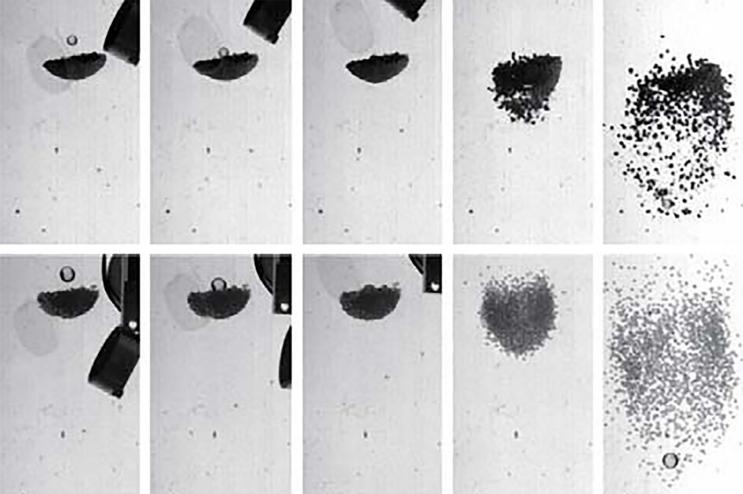

Debris disks are witnesses of widespread collision processes among small bodies that are in the process of forming planets or residues thereof. To better understand the planet-formation process, it would be advantageous to study such collision processes in detail. This was recently done by Hiroaki Katsuragi from Nagoya University in Japan and Jürgen Blum from TU Braunschweig. As part of the Research Unit “Debris Disks”, they investigated in the Braunschweig laboratory low-velocity impacts of compact plastic, glass and metal projectiles into loose clusters of glass beads and porous dust aggregates around 1 m/s impact speed. What they found was surprising: Independent of the type of projectile or target and independent of impact velocity, the projectile always possessed after the collision 15% of the initial impact energy and another 5% or so of the initial impact energy was transferred into kinetic energy of the fragments. The results suggest that this could be a universal law in low-velocity impacts into granular material, which would simplify further studies of collisions in debris disks. The editors of the renowned journal “Physical Review Letters” have highlighted the article by Katsuragi and Blum as “Editors‘ Suggestion”.
Details: Hiroaki Katsuragi & Jürgen Blum. Impact-Induced Energy Transfer and Dissipation in Granular Clusters under Microgravity Conditions. Phys. Rev. Lett. 121, 208001 (13 November 2018)